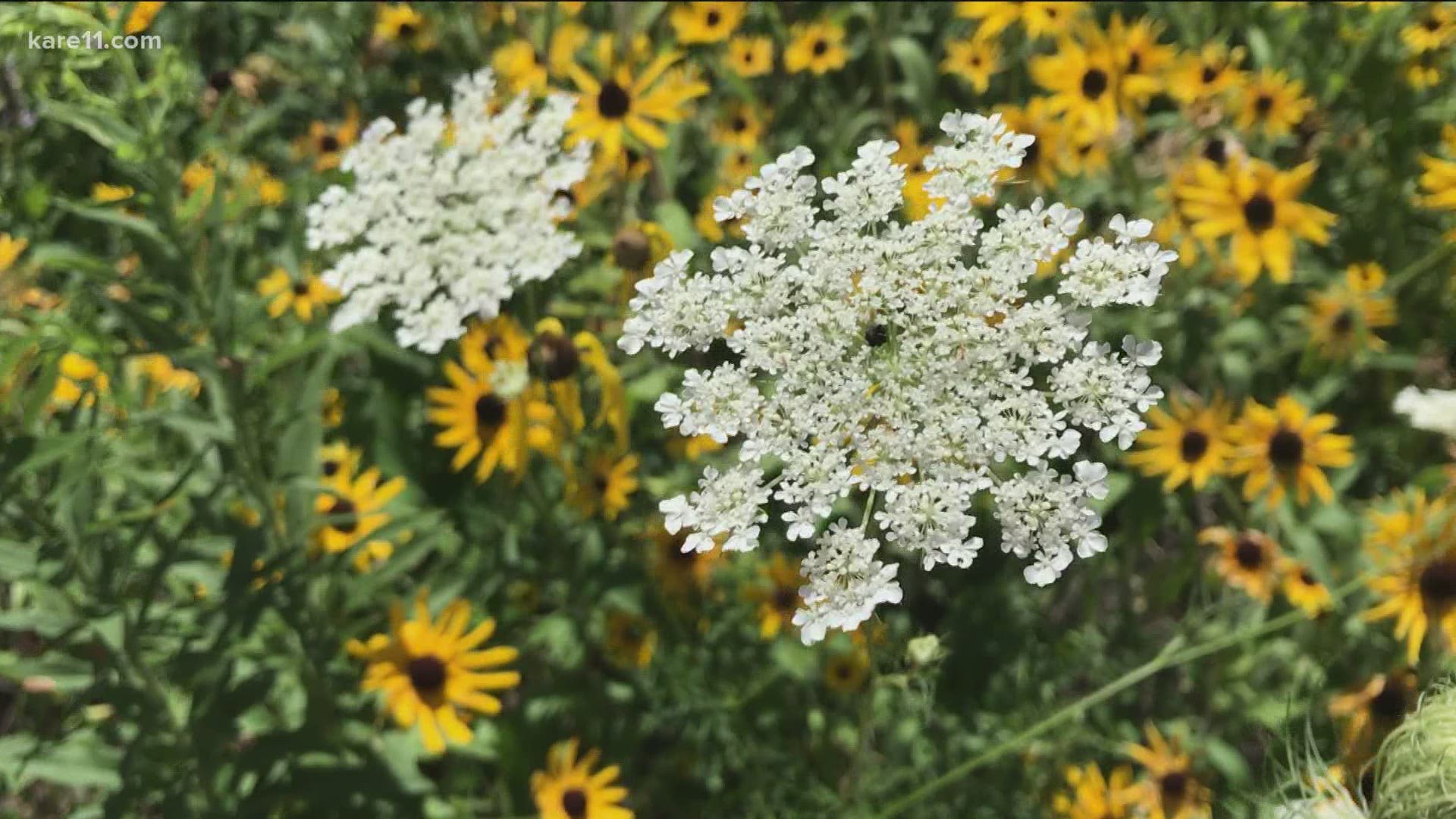MENDOTA HEIGHTS, Minn. — We’ve become very interested in prairies because of course we have our own little mini prairie in the front yard of KARE 11. And right now it looks like not much is happening. But in fact, there is a lot going on!
Great River Greening Ecologist Becca Tucker says both above and below the ground there’s action.
“Bumblebees just have the queen survive. And it buries itself in the ground and waits,” Tucker explains. “Other bees, a couple individuals make cocoons in the debris of the leftover prairie, the standing grasses and such.”
This is why even in our own backyards we should leave the remnants of our gardens standing through the winter months.
“A lot of insects, pollinators, all kinds of living things that use the standing vegetation especially in a prairie like we’re standing in front of today. Swallowtail butterflies make their cocoons in standing grass vegetation like this or anywhere in your backyard. They’ll make their cocoon in the fall and use the standing grass vegetation all winter to hold their cocoons nice and safe.”
Mother Nature does want and need some of the winter cold.
“Flowering plants that have really, really tough seed coats that over the winter, especially over long ridiculously cold periods that we have right now,” Tucker says, "that seed coat breaks down and by the time spring comes there could be water seeping into the cracks of that seed coat and the plant itself will be able to grow. So, this cold period is really important for a lot of native plants.”
The prairie we went to is a restored landscape known as Oheyawahe or Pilot Knob Hill. It’s a public space located at 2100 Pilot Knob Road in Mendota Heights.
Bobby and Laura both serve on the board of directors for Great River Greening.

